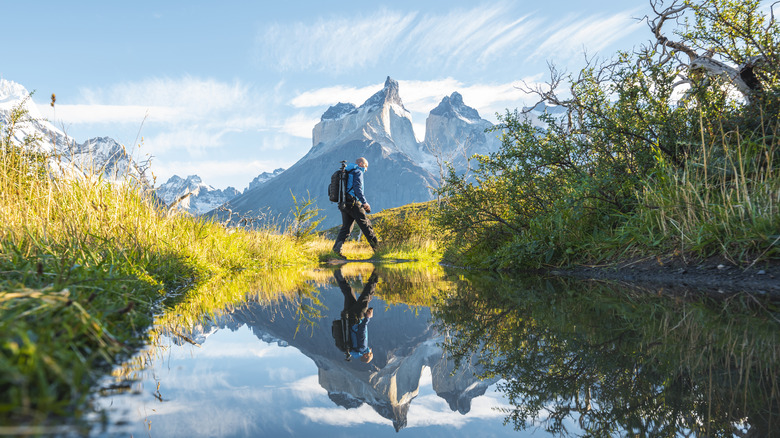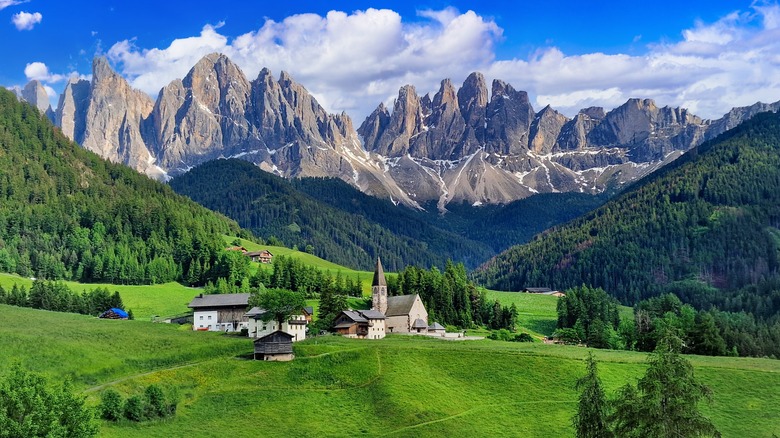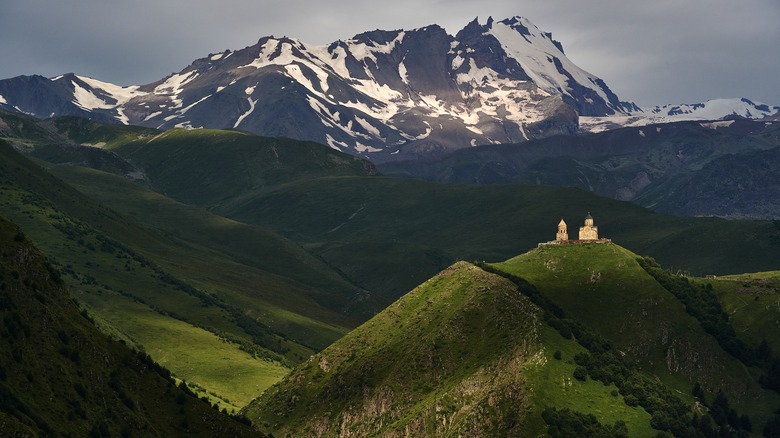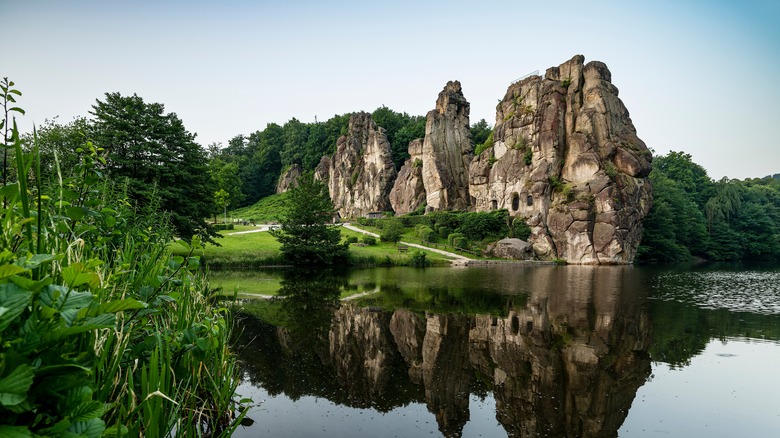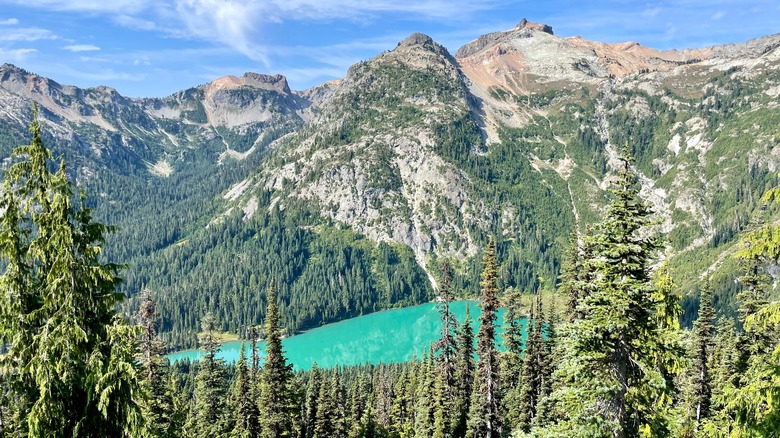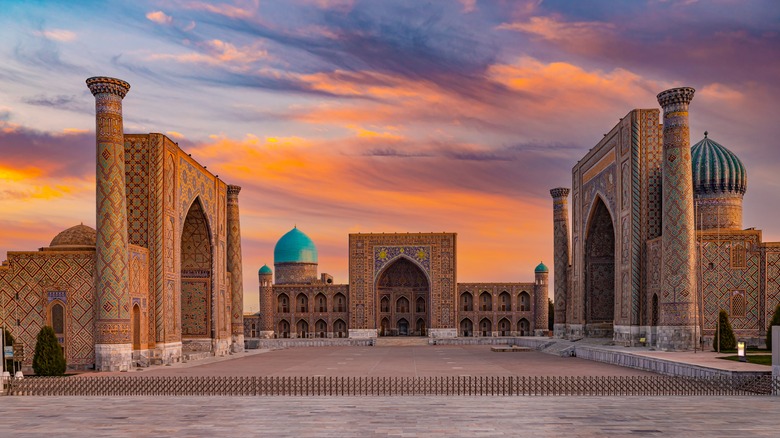Epic Multi-Country Hikes For The Bold And Adventurous
For hikers seeking more than just a scenic walk in the woods, how about a cross-country adventure — literally? Multi-country trails offer a once-in-a-lifetime opportunity to experience diverse landscapes, cultures, and challenges in one journey. These epic routes span across borders and regions, taking adventurers through towering mountain ranges, over sandy deserts, and long beautiful coastlines. Each trail presents its own set of physical difficulties, but it goes beyond just that.
These hikes provide a unique chance to engage with multiple cultures, each with its own traditions, languages, and culinary delights. As you traverse from one country to another, you'll encounter local communities and natural wonders that tell the story of the land and its people. In the process, you'll witness the rich tapestry of what makes each of us unique — from regional customs to diverse dialects — while also discovering the common threads that connect us all.
Ready to lace up your boots for these bold multi-country outdoor experiences? Here are five of the world's most adventurous cross-border hikes.
The Via Alpina
While many people primarily think of Switzerland when considering Alpine hiking, the entire Via Alpina trail spans eight countries across the Alpine mountain range: France, Monaco, Italy, Switzerland, Liechtenstein, Germany, Austria, and Slovenia. Formally established in 2000, the Via Alpina was created to highlight the beauty and cultural diversity of the Alpine region. Spanning more than 1,240 miles (2,000 kilometers), this trail offers hikers a chance to explore some of the most picturesque landscapes in Europe.
Until 2024, the Via Alpina was divided into five distinct routes. However, recent changes by the official organization have consolidated the trail to focus on what was previously known as the "red route." This updated path features 116 distinct "stages" that allow you to break up the trail between well-labeled landmarks. Each stage caters to various skills levels and preferences, but those tackling the entirety will experience a total elevation gain of 3,000 meters.
Hiking the Via Alpina is not just about the scenery though; it's also an opportunity to immerse yourself in local cultures, taste regional cuisines, and stay in traditional mountain huts. The trail is well-marked and offers various accommodations, making it accessible for both seasoned trekkers and beginners seeking adventure. Whether you aim to complete the entire trail or just tackle sections, the Via Alpina provides a well-supported and rewarding experience.
The Transcaucasian Trail
The Transcaucasian Trail is an emerging long-distance hiking route that spans the stunning landscapes of the South Caucasus — a region that straddles Eastern Europe and Western Asia, nestled between the Black Sea and the Caspian Sea. The trail is currently under construction and, once completed, will cover roughly 1,860 miles (3,000 kilometers). For hikers eager to explore this lesser-known region, certain sections are already open to adventurous travelers.
The Armenian portion of the trail can be thru-hiked in full, offering trekkers the chance to explore everything from volcanic plateaus to ancient monasteries on rugged cliffs. In Georgia, hikers can venture into the hidden gems of the Upper Svaneti and Imireti-Racha, both renowned for their high-altitude scenery, medieval villages, and welcoming locals — who will help you stock up on supplies for the remainder of your journey. In Azerbaijan, sections near the fascinating geological formations of Gobustan are open for exploration, though thru-hiking this portion of the trail is not advised due to its underdeveloped nature. For this reason, it's recommended to take a guided group trek on the Transcaucasian Trail to ensure your safety and to help you secure the necessary hiking permits.
Wildlife sightings are another exciting aspect of this journey. You might spot the wild Tur, a mountain goat species native to the area, or the elusive Caucasian leopard. Hikers will also encounter plenty of livestock along the way, as the region is home to traditional herding communities.
E1 Long-Distance Path
The E1 Long-Distance Path is a remarkable hiking trail that stretches over 4,970 miles (8,000 kilometers) from Norway to Italy, making it one of the longest and more diverse hiking routes in Europe. Beginning in the northern reaches of Norway, the E1 takes hikers through stunning fjords and arctic wilderness. The journey begins in Nordkapp (North Cape), often referred to as the "end of the world," which sets the tone for the trail's rugged northern sections. From here, the E1 moves southward through Sweden, where hikers traverse vast forests and rolling hills dotted with crystal-clear lakes. Crossing into Denmark, the landscape shifts to a gentler terrain through more pastoral scenery before reaching Germany.
In Germany, the trail meanders through historic castles and fairytale-like forests in towns like Hamburg and Hamelin. Further south in Switzerland, the trail becomes more challenging, but hikers are rewarded with jaw-dropping views of Switzerland's iconic snow-capped peaks and mountain lakes. Finally, the E1 descends into Italy, where the trail traverses the area around Mount Etna.
Along the route, hikers will find a range of accommodations from hostels to campgrounds. The entire trail is accessible to hikers of various experiences, although some exposed sections, particularly on mountains, may be challenging. The real worry, according to blogger Sandro Koster, are ticks, which spread dangerous diseases. So, you definitely want to carry a tick key and know how to repel and properly remove ticks for this journey.
The Pacific Crest Trail
Stretching over 2,650 miles (4,260 kilometers) across the west of North America, the Pacific Crest Trail (PCT) is a legendary hiking route that captivates adventurers with the potential to earn the prestigious American Triple Crown of Hiking. The trail starts at Campo, California, near the U.S-Mexico border, and ends at Manning Park, British Columbia in Canada. Along the way, explorers traverse the famous John Muir Trail, which extends into the Sierra Nevada. The route also showcases California's most iconic landscapes, including Yosemite Valley and Tuolumne Meadows. Hikers also have a chance to summit Mount Whitney, the highest point in the continental United States, for some beautiful panoramic views.
Hiking the PCT, whether in sections or in its entirety, requires permits. Thru-hikers planning to complete the entire trail in one season can apply for a PCT Long-Distance Permit, which allows them to travel across various national forests, wilderness areas, and national parks without needing individual permits for each section. This is extremely beneficial, as the trail crosses through more than 26 national forests and 7 national parks.
One of the key logistical challenges of the PCT is planning resupplies. With stretches of the trail often spanning over dozens of miles without towns or stores, hikers must carefully plan how they will restock food and essential supplies. Many PCT hikers mail resupply boxes to post offices and stores in trail towns along the route, making it easier to recharge and regroup. The PT offers a true test of endurance, skill, and mental fortitude, making it a dream destination for hikers around the world.
The Silk Road
Yes, you can hike the ancient Silk Road! Once a network of trading routes between merchants from Europe to Asia, the Silk Road stretches over 4,000 miles (6,400 kilometers) around the world. This web of pathways linked the East and West, winding through a dozen countries, including China, Mongolia, Kyrgyzstan, Uzbekistan, Iran, and Turkey.
But is the Silk Road still in existence today? While the original routes have evolved and faded over the centuries, a mixture of modern trails and roads still connect these countries. It is indeed possible for the brave and adventurous to traverse significant portions of the Silk Road by foot, like thru-hiker Daniele Ventola did. She embarked on this journey and spent nearly two years walking through the most popular parts of the trail from China through Central Asia.
Depending on how you plan out your hiking route, here is what you may expect on this vibrant and kaleidoscopic journey. In China, you can explore iconic sites like the Terracotta Warriors in Xi'an and the breathtaking landscapes of the Mogao Caves in Dunhuang. Then in Kyrgyzstan, hikers can trek through the picturesque Alay Valley. In Kazakhstan, you'll start to see where European influences meet Asia amidst the scenery in Almaty, and in Uzbekistan you can experience the vibrant bazaars, where the echoes of trade still resonate. In Iran and Turkey, immerse yourself in the stunning architecture of ancient cities. As you trek along these ancient pathways, you walk in the footsteps of countless traders, scholars, and adventurers who have shaped the course of history.
